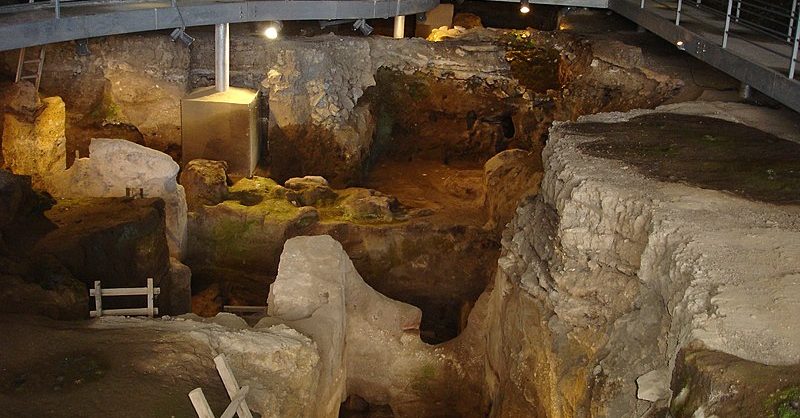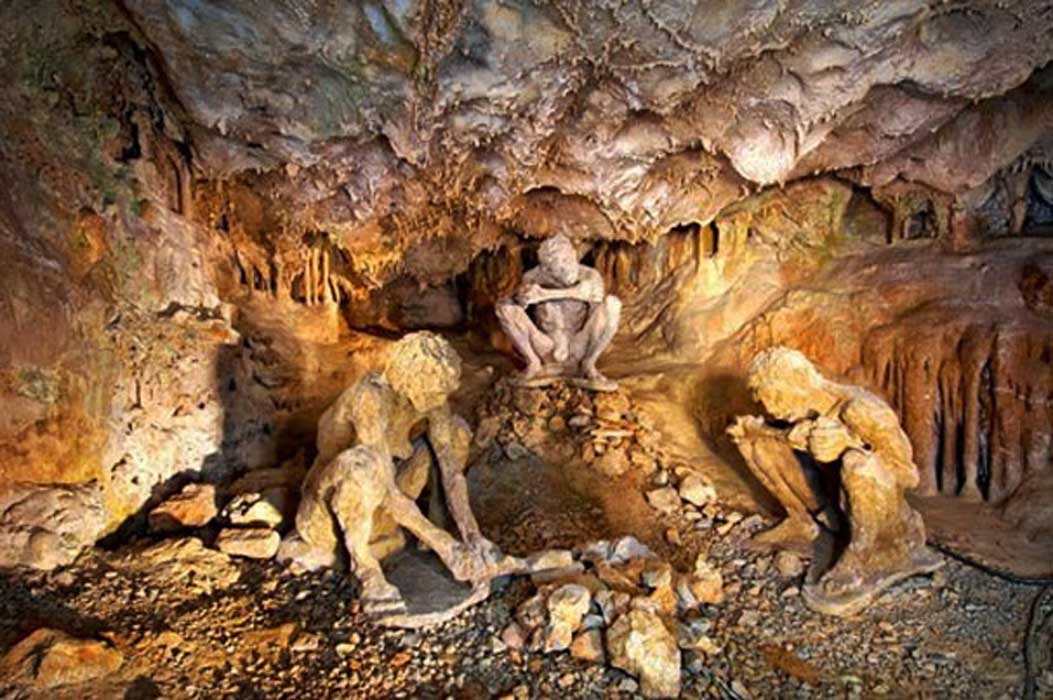The 43 Neolithic-era skeletons found in the Cave of Theopetra, Thessaly that were analysed recently along with plant and animal remains confirmed that the community there lived mostly on cereals, hunted large and small animals but also had domesticated animals, including dogs.
According to archaeologist Nina Kyparissi-Apostolika, who first began excavating the cave 34 years ago, the stratigraphy of the cave shows two things: that it contains signs of habitation from 130,000 years ago through the Neolithic times (about 6500 to 4000 BC), when Thessaly saw more communities living outside caves.
The cave lies in the fertile region of Thessaly, 3km before Kalabaka on the road from Trikala, and at 300m above sea level. It is close to a tributary of the Pinios River and looks out toward Meteora. The entrance is 3m high and 17m wide, and it receives a lot of light. The cave appears to have been abandoned at the end of the Stone Age, either after rock eroded by water started breaking down in the interior or because more communities started to be built out in open spaces. (The climate during the human occupation eras included three ice ages and two warm periods, the first dated to around 60,000 years ago.)
Turkish Defence Minister Akar accuses Greece of ‘expansionist policies’
Neolithic residents of the cave ate wheat and cultivated barley, olives, lentils and wild pear, among others. They ate some meat, mostly from the domesticated sheep and goat (which account for 60 pct of the bones found), and also kept cattle, pigs and at least one dog. About 11 pct of the bones found belong to deer, wild boars, bears, hares, wildcats and badgers, all of which were hunted. Bones from a bear, for example, still bear knife marks.
The community also made its own jewelry, drilling holes into deer-like teeth and shells from the nearby river. Remains of beeswax were also found in the community.
source thenationalherald.com






































